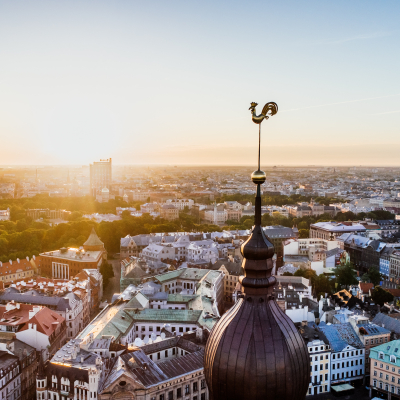Sign up for newsletters
Stay up to date on the weekly newsletters on recent news and activities.
Latvia’s economy has experienced one of the highest GDP growth rates in Europe. Latvia entered European Union in 2004, which led to rapid GDP growth. From 2005 to 2007, the average annual GDP growth rate exceeded 10%, when major inflows of foreign capital stimulated a significant increase in private consumption.
In 2008, the country entered a severe recession due to an unsustainable current account deficit, collapse of the real estate market, and large private debt exposure. During the crisis, GDP fell by a quarter, an external debt almost doubled, the number of employed persons decreased by 16%, while the real wages of those still employed fell by 12%. Latvia successfully emerged from the recession at the end of 2010, and growth has resumed, based mainly on the increasing role of exports.
From 2011 to 2013, GDP grew by 4.4% per year on average. In 2018, GDP grew by 4.0%, in 2019 – by 0.6%, while in 2020 due to the Covid-19 pandemics fell by 3.5%. In 2021 GDP grew by 6.7%, in 2022 – by 3.0%. The economic development in 2022 was significantly affected by the supply chain disruptions caused by the Russian invasion of Ukraine, the rise in inflation caused by energy and food prices, as well as the decrease in global demand. In 2024, the economic development continues to be affected by the geopolitical situation, uncertainty and high prices. GDP contracted by 0.4% in 2024.
The structure of Latvia’s economy has also changed over the years. The proportions of agriculture, manufacturing and transportation have decreased, while the shares of IT and other services have increased. In the long-run, Latvia’s GDP per capita has been catching up with the EU average level. In 1995, it was only at one-third of the EU average, but by 2019 had increased to two-thirds

Address:Perses Street 2, Riga, Latvia, LV-1442
Web: www.investinlatvia.org
For more information: invest@liaa.gov.lv
For tailored advice contact our team of experts
Stay up to date on the weekly newsletters on recent news and activities.
Stay up to date on the weekly newsletters on recent news and activities.